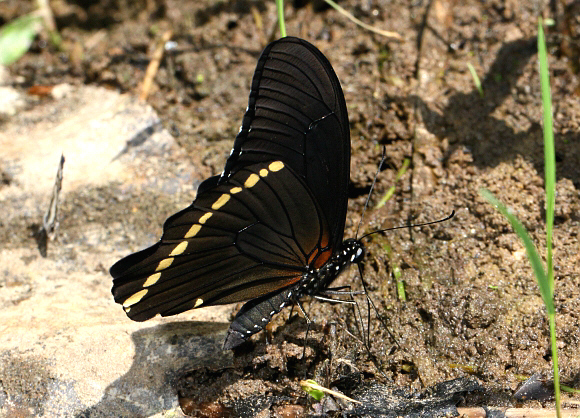
Introduction
In Africa there are about 90 known species of Papilionidae, of which 60 are placed in Papilio – a huge genus comprising of 210 species worldwide.
There are several untailed, green-banded species, including chrapkowskoides which has very broad metallic green bands on its dark brown upperside; and sosia which is similar but has more bluish bands. Papilio nireus, as its vernacular name implies, has very narrow bands, and these can vary in color from turquoise to metallic lime green in color. All three species have similar undersides.
Papilio nireus is found in forested regions throughout most of sub-Saharan Africa, but is absent from Madagascar and the Comores.
Habitats
This is a forest species, most commonly seen along logging roads or in secondary forest, but it also penetrates savannah habitats where it flies along riparian edges. It has migratory tendencies, so can also be found in botanical gardens, arboreta, parks and even occasionally in city gardens.
Lifecycle
The larval foodplants include Fagara, Calodendron, Clausena, Citrus and Teclea (Rutaceae).
Adult behaviour
Males commonly settle at damp patches on logging roads, often in groups of 4 or 5, to imbibe mineralised moisture. Both sexes visit Tridax, Eupatorium and various other flowers for nectar.
